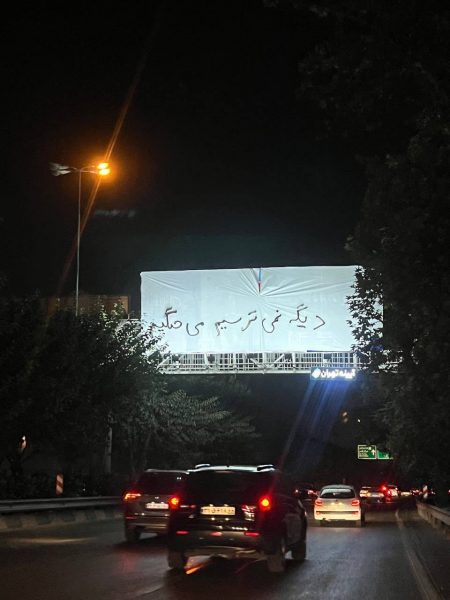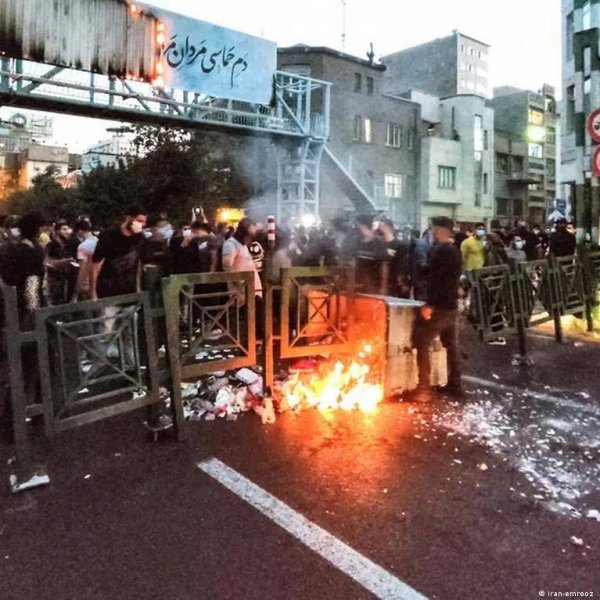The 2022 Rebellion of the Rejected
The 2022 Rebellion of the Rejected: What has been the trend of civil protests in Iran over the past two decades, and how has each instance differed from the previous ones? Were these protests fundamentally different from each other, or did each experience build upon the previous one, gradually accumulating? Are the 2000s generation, as some say, braver than the 1980s generation, or is the current model and style of protests a result of accumulated practical and theoretical experience from protests one or two decades ago?
If the protests of the late 1990s and 2000s were more purely political in nature, focusing on the right to freedom of action and expression and were largely middle-class, the protests of the 2010s were focused on economic demands and involved more peripheral areas and small towns. However, it seems that last month’s protests are an accumulation of the demands of previous protests, involving not just one class but all classes.
While the 2000s generation may lead the street protests, they are not the only ones. The protests are not confined to a single class and have become neighborhood and region-centric, turning into a collection of political, economic, social, cultural, and generational demands.
Beyond women, beyond everything
The current protest movement does not speak of ‘Where is my vote?’ nor of the overdue rights of workers or the inhumane conditions of retirees. In this movement, they do not shout for bread nor for the homeless children or the suffering grave dwellers. They do not speak of one or two years of unpaid wages for our workers nor lament the destruction of the environment and cultural heritage. Yet, at the same time, in a broader demand and with its slogans, it seems to cry out for all these things.
According to Youssef Abazari, a sociology professor at the University of Tehran, this uprising, even if it appears to be about women, is by no means limited to women’s issues. It is much larger than that. No women’s issue is solely a women’s issue. This uprising encompasses all aspects of Iranian life, a life currently at risk of destruction. If we imagine Iran as a home, we must admit that this home is on the brink of ruin.

The demand for recognizing differences
It might be said that the recent widespread protests are due to the activation of gender, generational, religious, ethnic, and sectarian fault lines in Kurdistan and Baluchistan and to some extent class-based ones. Of course, all these fault lines are based on an inefficient governance structure, and it was indeed the accidental killing of Mahsa, a young Kurdish Sunni girl, that caused most of these fault lines to activate simultaneously.
Some believe that this simultaneous activation of fault lines has enabled the formation of a broad negative protest, and this emphasis on the negative aspect has led us to think that all these protests are a common and interconnected phenomenon, but it seems that this is not the case.
For example, perhaps the protests in Kurdistan and Baluchistan have more roots in ethnic, racial, and religious discrimination, while the roots of protests in Tehran or other central cities are more generational, religious, and class-based. Based on this, these protests have a goal beyond them: the negation of a discriminatory and institutionalized structure.
According to some, it is true that the protesters agree that the current governance is a tangible symbol of a structure that has fueled all these discriminations, but this consensus should focus on the intertwined structure of these discriminations, not just the power structure that has formed, grown, and bent under the pressure of these discriminations.
For this reason, some suggested that the constructive demand that could transform these widespread negative protests into a constructive and sustainable movement starts with recognizing differences, with the negation of all sexual, gender, generational, religious, sectarian, and ethnic racial discriminations.
Priority on individual freedom
Youssef Abazari believes that the Iranian ruling body also turned every social action into cultural tension to prevent people from addressing the real issues of their lives. In this context, women’s issues, especially the issue of hijab, were pushed to the forefront of cultural issues, and any difference with the official culture was labeled as corruption.
On the other hand, market culture was given wings in big theatrical productions, domestic shows, and government cinema, and it was expanded by influencers with loose hijabs favored by the Ministry of Sports. Economic contradictions plunged teachers, workers, retirees, and ethnic groups into dark days, but the government continued to beat the drum of hijab corruption and attack women’s individual freedoms.
According to him, the result of that economic inequality and this cultural division plunged Iran into the pit of social, political, and economic contradictions that we are currently witnessing. The solution to escape these contradictions is neither to be enchanted by the story of Naser al-Din Shah’s marriage to one of his wives as narrated by domestic cinema nor to be captivated by the stories of the subsequent kings’ relationships with their wives as told by Saudi Arabian media.
What will change the fate of the Iranian people is to detach from these cultural industry models and adopt a democratic policy that preserves their individual freedom from any imposed model.
The central demand of the protests
But aside from these, it seems that if a title were to be chosen for the core and central demand of the recent protests, it would be nothing but the demand for a lifestyle or, as Abazari puts it, the same individual freedom, which is the main demand of a generation of 27 million people born between 1991 and 2008.
A generation that makes up one-third of Iran’s population and is expected to live for at least another 60 years, yet not only do their demands have no place in the country’s policymaking, but the two are completely swimming in opposite directions. The recent protests are the outcome of this divergence.
The recent protests are the roar and cry of a generation, a generation whose gap with previous generations is unparalleled in history, a generation that is more influenced not by parents, the education system, or state media but by certain singers or music groups, by YouTube and Instagram, and foreign writers and podcasters.
If we assume that the generational gap is the root of the protests, which most officials have also acknowledged, it can no longer be silenced with previous methods, which involved not recognizing the protests and suppression.
Emad Afroogh, a sociologist, said in a recent interview with the Shargh newspaper that this generation is a released or rejected generation. This is the rebellion of the rejected.

